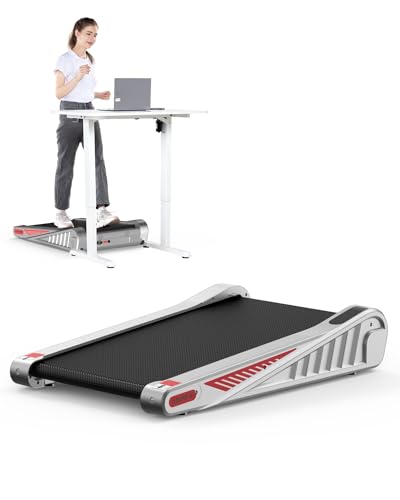The Benefits of Using a Treadmill for Walking: Your Ultimate Guide
In an age where inactive way of lives have become more common, discovering ways to include exercise can significantly benefit total health. Walking, thought about one of the most available kinds of exercise, uses a myriad of health benefits. Integrating this with a treadmill can make it even easier for people to keep a regular walking routine, regardless of the weather exterior. This post will dig into the benefits of utilizing a treadmill for walking, compare numerous types, and address some often asked questions-- all planned to assist readers make notified choices.
The Advantages of Walking on a Treadmill
1. Convenience and Accessibility
One of the most significant advantages of a treadmill is the convenience it uses. With one in your home, there is no requirement to venture out in harsh weather condition or discover a safe walking route.
2. Controlled Environment
Treadmills supply a regulated walking environment that allows users to set their rate, incline, and period. This ensures a customized exercise that meets individual physical fitness goals and requirements.
3. Low-Impact Exercise
Compared to running or running, walking is a low-impact exercise that is easier on the joints. Treadmill Manual have actually cushioned belts to even more lower impact stress.
4. Health Benefits
Walking has numerous health advantages, including enhanced cardiovascular health, boosted mood, much better weight management, and increased durability. Integrating regular walking on a treadmill can amplify these advantages.
5. Multi-tasking Opportunities
While walking on a treadmill, it's possible to engage in other activities such as reading, seeing tv, or listening to music. This makes workouts more enjoyable and can encourage consistency.
6. Threat Removal
Using a treadmill eliminates dangers connected with outside walking, such as unequal terrain, traffic, and other ecological risks.
Kinds of Treadmills: A Comparison Table
Picking the right treadmill can considerably impact the walking experience. Below is a comparison table of different types:
| Treadmill Type | Description | Pros | Cons |
|---|---|---|---|
| Manual Treadmills | Needs physical effort to move the belt. | Generally cheaper; no electricity required. | No automatic incline or speed changes. |
| Electric Treadmills | Powered by electricity; adjustable speeds and slopes. | Versatile; simple to use; often includes extra features. | Can be more costly; requires an outlet. |
| Folding Treadmills | Developed for simple storage and conserving area. | Space-efficient; hassle-free for home use. | Might have a smaller sized running surface area. |
| Business Treadmills | Much heavier, developed for frequent use in gyms. | Durable; typically packed with features and programs. | Can be extremely expensive. |
How to Get Started with Walking on a Treadmill
If you're new to walking on a treadmill, think about the following actions to produce a safe and effective regimen:
Step 1: Set Your Goals
Determine your walking goals, whether they are weight reduction, enhanced endurance, or simply an increased day-to-day activity level.
Step 2: Learn the Controls
Acquaint yourself with the treadmill's control board. Understand how to adjust speed, incline, and how to use any additional features it may have (heart rate display, exercise programs, and so on).
Step 3: Warm-Up
Start each walking session with a 5-minute warm-up at a slower speed to avoid injury.
Step 4: Start Slow
Start with low-intensity walking sessions 2 to 3 times a week, gradually increasing your period and intensity.
Step 5: Incorporate Incline
As your physical fitness improves, think about including an incline into your regular to increase strength and work different muscle groups.
Step 6: Cool Down
Conclude your workout with a 5-minute cool-down at a slower rate to assist your body recuperate.
Often Asked Questions (FAQs)
1. The length of time should I walk on a treadmill for health advantages?
The CDC advises at least 150 minutes of moderate aerobic activity, like brisk walking, each week. This equates to about 30 minutes a day, five times a week.
2. Is walking on a treadmill much better than walking outside?
Both offer benefits, however a treadmill permits a regulated environment, which may fit some people better, particularly in varying weather.
3. Can I lose weight by walking on a treadmill?
Yes, walking can contribute to weight reduction when integrated with a healthy diet plan. It's important to keep consistency and slowly increase strength.
4. What speed should I walk on a treadmill?
For novices, a speed of 3-4 miles per hour is thought about a vigorous walk. As endurance improves, individuals can change their speed according to their fitness objectives.
5. How can I stay motivated while walking on a treadmill?
Listening to music, watching television programs, and even joining virtual walking neighborhoods can help keep motivation levels high.
Incorporating a treadmill into a walking regimen can offer enormous benefits, making exercise accessible and efficient. With many kinds of treadmills available, people can choose one that best fits their requirements and preferences. By setting practical goals and planning routine exercises, users can experience the myriad health benefits that come with walking. Keep in mind to listen to your body, consider a mix of inclines and speeds, and most notably, delight in the procedure. Walking on a treadmill is not simply exercise; it's an action towards a healthier way of life.

